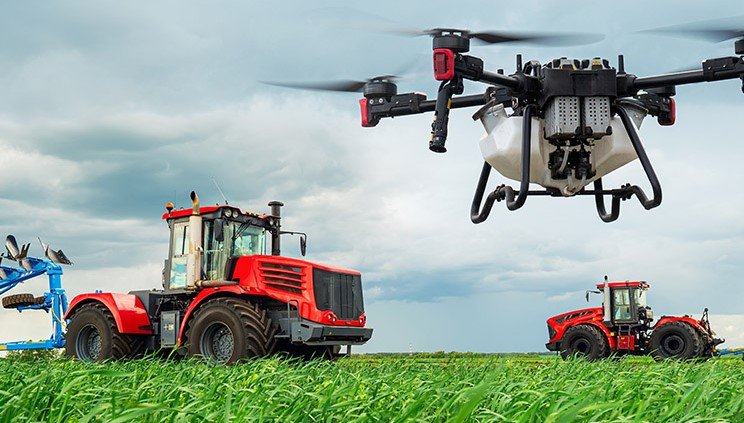JBS Southern is rolling out advanced tech like autonomous drones to improve efficiency in its beef and lamb supply chains, as revealed at a recent supplier event in Melbourne. This move aims to enhance traceability, cut labor costs, and boost production across feedlots and processing sites, reflecting a growing trend in agriculture.
Tech Revolution in Red Meat Production
JBS Southern, a key player in Australia’s meat industry, shared details of its innovation push during the Great Southern conference last week. Leaders like Sean Starling, head of innovation and industrial engineering, highlighted how technology is transforming operations from farm to table.
The company invests heavily in tools that address real challenges in supply chains. These include automation for better tracking and artificial intelligence for smarter decision making. Such efforts come at a time when global meat producers face rising demands for sustainability and speed.
Experts note that tech adoption in agriculture has surged in 2025, with drone usage up by 25 percent in the sector, according to recent industry reports. JBS’s approach aligns with this shift, helping it stay competitive amid volatile cattle prices and environmental pressures.
Autonomous Drones Take Flight at JBS Sites
At the heart of JBS’s tech showcase were autonomous drones trialed at Yambinya Station and Beef City feedlots. Developed by Sensorem, these “drone in a box” systems operate without on-site pilots, launching from docking stations for tasks like monitoring cattle and securing sites.
Each drone recharges automatically and connects via satellite for remote control from Perth. They carry tools such as thermal cameras, spotlights, and speakers, allowing quick responses to issues. JBS teams access live video feeds on mobile devices, enabling fast decisions.

This innovation builds on trials with major firms like Telstra and BHP. Now in agriculture, the drones handle complex environments, with 23 systems active across Australia and more on the way.
Sensorem’s Ed Boxall pointed out the drones’ versatility, noting over 90 potential uses at Yambinya alone. These range from daily checks to emergency responses, cutting down on manual labor.
Practical Uses and Efficiency Gains
JBS uses the drones for cattle health checks, fence inspections, and night-time security patrols. This reduces the need for workers to cover vast areas, saving time and lowering risks.
In one demo at the conference, audience members saw how drones provide real-time data, spotting issues like injured animals or breaches instantly. Such features help prevent losses in feedlots, where quick action is vital.
Compared to traditional methods, drones offer big advantages. Here’s a look at key differences:
| Aspect | Traditional Methods | Drone Technology |
|---|---|---|
| Monitoring Speed | Hours or days | Minutes |
| Labor Required | Multiple workers | Remote oversight |
| Coverage Area | Limited by ground access | Up to 5 km radius |
| Cost per Operation | High due to fuel and staff | Lower with automation |
| Data Accuracy | Manual estimates | High-res thermal imaging |
These improvements lead to better supply chain flow, with fewer delays in beef and lamb processing.
Beyond JBS, similar tech appears in other sectors. For instance, recent events in mining show drones cutting inspection times by half, a benefit now extending to farming.
Sustainability and Broader Impacts
Tech like drones supports JBS’s sustainability goals, as outlined in their latest reports. By optimizing resources, the company reduces waste and emissions, aligning with customer demands for eco-friendly meat.
In lamb production, JBS focuses on breeds like Dorset for year-round supply, enhanced by tech for efficient farming. This ties into global trends, where meat giants aim for carbon-neutral operations by 2030.
Industry watchers say such innovations could stabilize prices, a hot topic after recent volatility in cattle markets. JBS’s efforts might inspire smaller producers to adopt similar tools.
Looking Ahead in Agrotech
As JBS expands its tech trials, experts predict wider adoption across Australia’s red meat industry. Partnerships with groups like the Australian Meat Processor Corporation fuel this growth.
Challenges remain, such as regulatory hurdles for drone flights, but progress in 2025 shows promise. JBS plans more integrations, potentially including AI for predictive analytics in supply chains.
- Key benefits of JBS’s drone program include faster response times to feedlot issues.
- Enhanced security reduces theft risks in remote areas.
- Data from drones improves animal welfare tracking.
- Overall, it supports a more resilient supply chain amid climate changes.
What do you think about tech in farming? Share your views in the comments and pass this article along to fellow industry folks.








